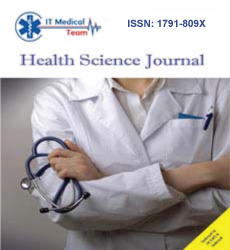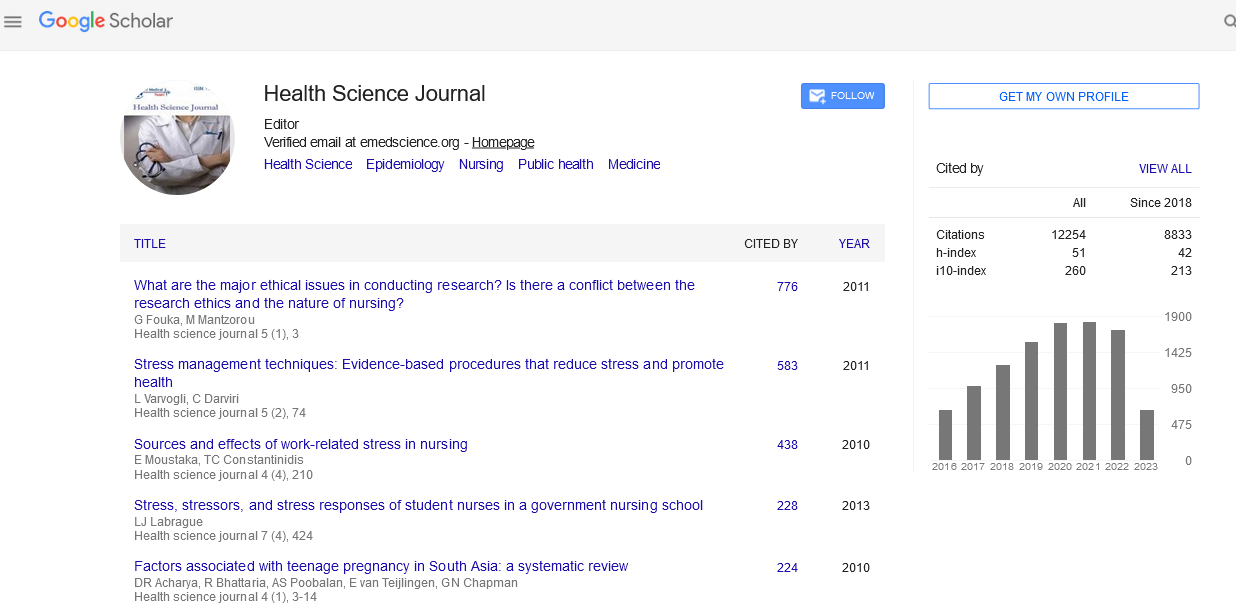Abstract
Hyperbaric Oxygen Therapy (HBOT) is a well-established treatment primarily used for conditions like decompression sickness, carbon monoxide poisoning, and chronic non- healing wounds. However, emerging research has suggested potential therapeutic benefits of HBOT for a range of non-traditional medical applications. These applications include neurological disorders like traumatic brain injury (TBI), chronic fatigue syndrome (CFS), Alzheimer’s disease, and certain autoimmune conditions. This review aims to explore these non-traditional uses of HBOT, examine the scientific evidence supporting its efficacy, and identify potential mechanisms of action. It also discusses the challenges and limitations faced by researchers and clinicians in expanding the scope of HBOT beyond its conventional uses.
Keywords
Hyperbaric Oxygen Therapy; Non-Traditional Uses; Traumatic Brain Injury; Chronic Fatigue Syndrome; Alzheimer’s Disease; Neurological Disorders; Autoimmune Conditions
Introduction
Hyperbaric Oxygen Therapy (HBOT) involves breathing 100% oxygen in a pressurized environment, typically at 1.5 to 3 times the normal atmospheric pressure. Historically, HBOT has been used to treat conditions such as decompression sickness (commonly seen in divers), carbon monoxide poisoning, and chronic wounds that are resistant to healing. More recently, however, researchers have begun exploring its potential to treat a variety of non-traditional medical conditions, including neurological disorders, autoimmune diseases, and chronic fatigue syndrome (CFS). These new applications have sparked considerable interest due to the promising results in preclinical studies and early-stage clinical trials. This paper aims to review the current body of evidence regarding the non-traditional uses of HBOT [1].
Mechanism of Action
To understand why HBOT might be beneficial for conditions beyond its conventional use, it's important to understand how it works. In a hyperbaric chamber, the increased atmospheric pressure allows oxygen to dissolve more efficiently in the blood plasma, cerebrospinal fluid, and tissues, enabling oxygen delivery to areas with impaired circulation. This increased oxygen availability accelerates tissue healing, reduces inflammation, and promotes neurogenesis—the formation of new neurons in the brain [2]. In non-traditional applications, the key therapeutic benefits of HBOT seem to stem from its ability to enhance cellular repair and modulate inflammatory pathways. The therapeutic effects on oxidative stress, mitochondrial dysfunction, and neuroinflammation have made HBOT an appealing candidate for treating complex conditions such as brain injuries, autoimmune diseases, and fatigue syndromes.
Traumatic Brain Injury (TBI)
One of the most promising non-traditional uses of HBOT is for the treatment of traumatic brain injury (TBI), which affects millions of people worldwide [3]. TBI results in brain tissue damage that can lead to cognitive deficits, mood disorders, and physical impairments. Conventional treatments for TBI focus on managing symptoms, with limited options for reversing long-term neurological damage. Recent studies suggest that HBOT may help promote recovery in TBI patients by stimulating cerebral oxygenation, reducing brain edema (swelling), and enhancing neuroplasticity, the brain's ability to reorganize itself by forming new neural connections. Clinical trials have demonstrated improved cognitive function, reduced post-concussion symptoms, and a faster recovery time in individuals receiving HBOT following a brain injury. A study published in The Journal of Neurotrauma showed significant improvements in cognitive function and quality of life for TBI patients who underwent HBOT, with participants reporting decreased symptoms of depression and anxiety. Despite these positive findings, more large-scale, randomized controlled trials are needed to establish optimal HBOT protocols and understand the long-term effects on TBI recovery.
Chronic Fatigue Syndrome (CFS)
Chronic Fatigue Syndrome (CFS) is a debilitating disorder characterized by persistent, unexplained fatigue that doesn’t improve with rest. It often includes symptoms like sleep disturbances, cognitive dysfunction, and muscle pain, which can significantly impair the quality of life [4]. The pathophysiology of CFS remains unclear, but it is believed to involve a combination of immune system dysregulation, mitochondrial dysfunction, and neuroinflammation. Emerging research has suggested that HBOT may offer relief for CFS patients by improving mitochondrial function and reducing oxidative stress. A study published in The Journal of Chronic Fatigue Syndrome found that patients who received HBOT showed significant improvements in fatigue levels, cognitive function, and overall quality of life [5]. While the exact mechanism remains unknown, the increased oxygenation in tissues and the anti-inflammatory effects of HBOT may help alleviate some of the symptoms of CFS. However, results have been mixed, and not all studies show the same level of benefit. This variability in outcomes could be due to differences in the HBOT protocol (such as pressure levels, duration of therapy, and number of sessions) and the heterogeneity of CFS itself, which could require more personalized treatment approaches.
Alzheimer’s Disease
Alzheimer's disease (AD) is a progressive neurodegenerative disorder that results in cognitive decline, memory loss, and personality changes. Currently, there are no cures for Alzheimer’s, and treatment options primarily focus on symptom management. However, recent studies suggest that HBOT could potentially slow the progression of the disease. One of the key challenges in Alzheimer’s is impaired oxygenation in the brain, leading to neuronal dysfunction and loss of cognitive abilities. By enhancing oxygen supply to the brain, HBOT may stimulate brain function, reduce amyloid plaque deposition, and improve the overall brain's metabolic environment. Animal studies have shown that HBOT can reduce oxidative stress, promote neurogenesis, and improve memory in Alzheimer's models. A small pilot study published in The Journal of Alzheimer's Disease showed that patients with mild to moderate Alzheimer’s who underwent HBOT exhibited improved cognitive function and reduced symptoms of dementia. While promising, these results are preliminary, and further clinical trials are required to assess the long-term efficacy and safety of HBOT for AD.
Autoimmune Diseases
Autoimmune diseases, such as rheumatoid arthritis (RA) and multiple sclerosis (MS), are characterized by an overactive immune response that attacks the body’s own tissues. Chronic inflammation plays a central role in the pathogenesis of these conditions. Inflammation can lead to tissue damage, pain, and a decreased ability to heal. Recent studies have explored the use of HBOT in reducing inflammation and modulating immune responses in autoimmune diseases. Research suggests that HBOT may help reduce pro-inflammatory cytokines and promote the healing of inflamed tissues. A study on RA patients published in The Journal of Rheumatology indicated that HBOT improved joint function and reduced pain in individuals with active disease. Similarly, in MS, HBOT may help improve oxygen delivery to damaged nerve tissue, promoting healing and reducing symptom severity. While the findings in autoimmune diseases are promising, the results are still early, and further research is required to establish clear therapeutic protocols and identify patients who are most likely to benefit from HBOT.
Challenges and Limitations
Despite its potential, the use of HBOT for non-traditional conditions faces several challenges. First, the scientific community has not yet fully elucidated the mechanisms by which HBOT exerts its therapeutic effects on conditions like TBI, CFS, and Alzheimer’s. Additionally, the evidence base is still limited, with many studies suffering from small sample sizes, short follow-up periods, and methodological inconsistencies. Another challenge is the accessibility and cost of HBOT, which typically requires specialized facilities and equipment. The high cost of treatment may limit its availability, particularly for patients who are already dealing with chronic conditions. Additionally, safety concerns related to prolonged exposure to high-pressure environments and oxygen toxicity must be carefully considered in long-term use.
Conclusion
Hyperbaric Oxygen Therapy holds significant promise for non-traditional uses, particularly in the treatment of traumatic brain injury, chronic fatigue syndrome, Alzheimer’s disease, and autoimmune disorders. While the underlying mechanisms of HBOT are not yet fully understood, evidence suggests that it can enhance tissue repair, reduce inflammation, and promote neurogenesis. However, despite promising results, further research, including large-scale clinical trials, is needed to establish definitive treatment protocols and assess long-term efficacy and safety. As our understanding of the therapy’s mechanisms deepens, HBOT may become a valuable tool in the management of these challenging conditions.





